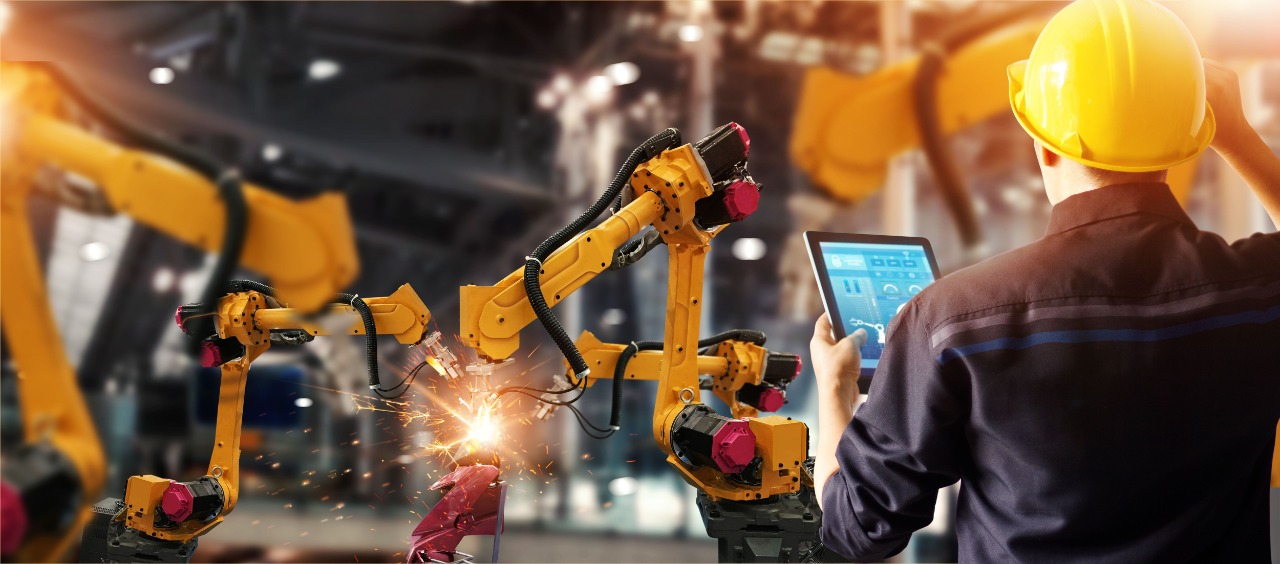Robotics & Prefab

Gauging the Energy Efficient Quotient of Prefab Buildings
March 18, 2022
Light Steel Frame– Strong & Durable
June 9, 2022The TECH ARM
The COVID-19 outbreak, like any other industry, has negatively impacted the construction industry, with construction work coming to a standstill in the initial months of the lockdown. The fast evolution of technological advancements such as automation and robotics is expected to drive construction in the future.

Construction is one of the sectors where a significant amount of material is wasted due to traditional techniques and processes. Autodesk identifies that while it is difficult to get exact figures of the waste produced on a typical construction site, several construction organizations estimate that nearly 30% of the total weight of building materials transported to a building site is wasted. The increasing focus of the construction companies on reducing the resource and material waste of building materials during construction is expected to drive the adoption of the Construction Robots Market. The drive to reduce the construction time of the projects is further aiding the growth of construction robots. Buoyed by this invigorating shift, the Construction Robot Market which was valued at US$44.63 million in 2020 is expected to reach US$ 95.10 million by 2026 while registering a CAGR of approximately 13.6% during the forecast period (2021 – 2026).
The flexibility and adaptability of robots make them ideal for meeting the growing trend of mass customization. In comparison to fixed machines that can only be used for specific purposes, such as those used for cutting or drilling for example, robots can be set up with a variety of different programs that can be changed over as and when necessary to suit the specific requirements of a particular design or the varying characteristics of different types of workpieces. This flexibility can make it possible to customize or adapt standard components, providing customers with a greater range of options and saving time and cost by eliminating the need to transfer items between different dedicated machines or make design modifications or alterations by hand.
For construction companies, having the capability to enable mass customization provides a much greater degree of freedom in terms of what can be made. This is particularly the case where robots are combined with building design software, with the robot’s movements guided according to the specifics of the design. Robotic construction techniques hold out the promise of meeting many of the challenges of the construction industry and even more importantly, of solving the pressing needs of wider society.
Advantage Robotics
Robots build more efficiently: Robotics offers tremendous potential to enhance efficiency, productivity, and manufacturing flexibility in the construction sector. Some of the usages, as highlighted by leading automation company, ABB, include:
- Lifting and handling: With the ability to handle materials ranging from wooden panels to steel beams, robots are well-suited to the requirements of modular construction. Working as standalone units or as part of production cells, they can be used to transfer processed component parts between stages, eliminating the risk of injuries to human workers caused by lifting and carrying heavy loads.
- Assembly: The ability of robots to handle heavy loads is also beneficial when it comes to the assembly of component parts into complete structures. An example is the placement of horizontal and vertical steel beams.
- Joining of components: Robotic automation can be used to handle a variety of tasks involved in joining components. Robots can be used to perform a range of functions, including drilling holes for bolts or screws and placing and fastening them into place, saving time and reducing the risk of stress-related injuries caused by performing repetitive actions.
- Fitting of windows, doors, and facades: Robots can be used to assist workers with lifting and positioning potentially heavy and cumbersome doors, windows and facades into place, speeding up the fitting process. By reducing the amount of labor involved in handling this task, robots can also help to enable people to be deployed to other tasks, making the best use of available resources.
- Quality inspection: Combining BIM with laser-scanning techniques, both the quality and quantity of prefabricated components can be checked to ensure that the construction line is not delayed due to a lack of components or component defects.
- Painting and spraying: Painting walls is ideal for automation as the toxic chemicals involved and the repetitive movements needed can be harmful to human workers.
- Bricklaying robots: A bricklaying robot can lay up to 3,000 bricks per day, is exceptionally skilled at lining bricks up vertically, keeps operating as long as it has enough bricks, mortar, and fuel, helps reduce labor shortage challenges, significantly increases efficiency and productivity, and reduces operational costs. The latest bricklaying robots are equipped with CAD and data-tracking technologies to ensure more productive, safe, and sustainable building processes.
In short, robotic automation offers huge potential to enhance productivity, efficiency, and manufacturing flexibility throughout the construction industry. It’s about time that construction equipment companies start their automation & robotics journey and offer their customers new-age solutions that they have been looking out for.



